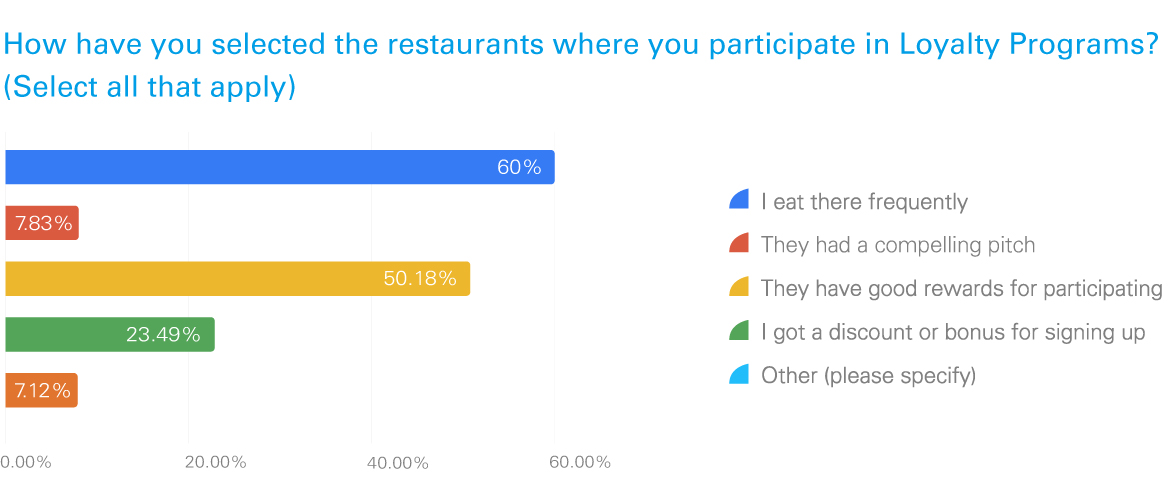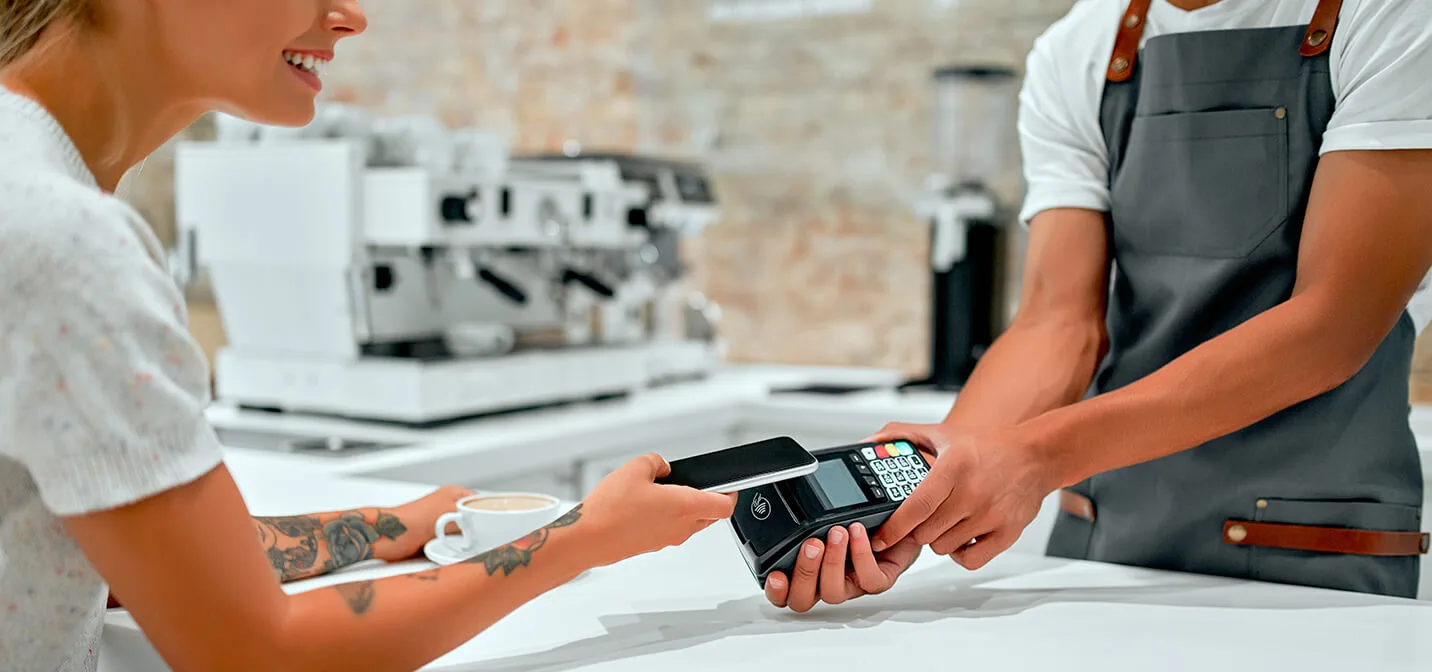In light of rapidly changing consumer behaviors and dining patterns in recent years, one might assume that loyalty is less relevant than it used to be. However, earning and retaining customer loyalty has only become more important to brands that want to win in this challenging time. And Azira’s recent report, The New World of Consumer Behavior: Restaurants 2022, shows that customers are, in fact, loyal, with 50% of diners saying they eat out at restaurants where they are a part of a loyalty program more often than other restaurants.
The average diner participates in 2-3 loyalty programs (with diners aged 18-44 participating in 4 on average), meaning they are somewhat selective about the programs they participate in.

Loyalty programs move into the digital age
As restaurants move towards a more digitally-focused dining experience, loyalty programs are moving into the digital age as well. In the past, many dining establishments relied on punch cards and coupon offers, but by embracing digital relationships, restaurants have a huge opportunity to create a deep relationship with their customers that leads to increased loyalty and therefore revenue.
Mobile apps in particular have enabled a whole new wide swath of loyalty-based incentives. Starbucks remembers its customers’ typical orders, customizations included. Chick-fil-A uses its app not only as a means of ordering but also for communication, offering location-based offers and helping streamline order preparation and the pickup process. McDonald’s frequently runs free food promotions and celebrity meal deals through its app, helping it be the #1 QSR app downloaded in 2021.
Why diners participate in loyalty programs
Strong communication from apps helps diners feel more connected to these restaurants as their preferred brands. In fact, second only to getting free products or bonus items (45%), diners listed the chance to save money at my favorite restaurants as their top reason for using loyalty programs (44%). Similarly, diners also enroll in loyalty programs because they already eat at the restaurant frequently (61%), followed by having a good rewards program (50%).

The New World of Consumer Behavior: Restaurants 2022
Strategies to win the loyalty game
Chick-fil-A, Domino’s, Panera, Starbucks, and McDonald’s all ranked the highest in loyalty programs used among our diner survey. Unsurprisingly, they are also the restaurants that continue to have strong footfall traffic and trade areas, as shown in Azira’s human movement data.
Panera Bread developed a particularly unique loyalty program: a subscription-based program for unlimited coffee (and eventually other drinks). This program has ultimately boosted visitor traffic by 200%, and even increased food attachment to coffee orders by 70%.
To win customer loyalty, brands must first and foremost understand what their diners want in order to best serve them. A strong loyalty program not only needs to offer incentives and deals for loyal customers, but also needs to offer a personalized experience based on the customers’ patterns and preferences. To successfully achieve this, brands can expand upon insights from first-party data with third-party data offering insights into human movement and other critical aspects of the consumer journey.
Want to learn more about trends in dining? Read the full report: The New World of Consumer Behavior: Restaurants 2022.
Study Methodology
This survey was conducted between February 24-27, 2022 with a total of 508 respondents in the United States, census-weighted by age, gender, income, and region. Additionally, Azira studied pulled human movement data for restaurant locations in Los Angeles, New York, Houston, Chicago, Miami, and San Francisco/Oakland between June 1, 2021 – May 31, 2022. Reports used included Azira Pinnacle’s Estimated Visits, Time Spent, Visitor Home and Work Locations Insights, as well as Azira’s Geosocial Affinity, Estimated Visitors, and Cross-Visitation Reports.



